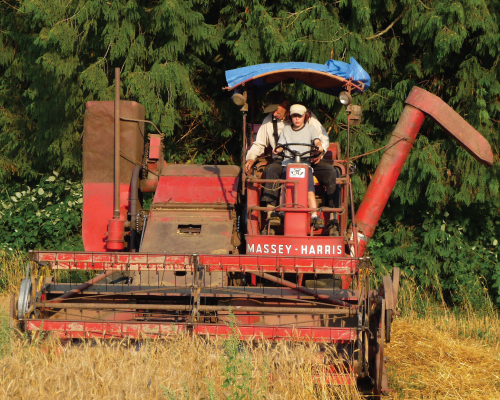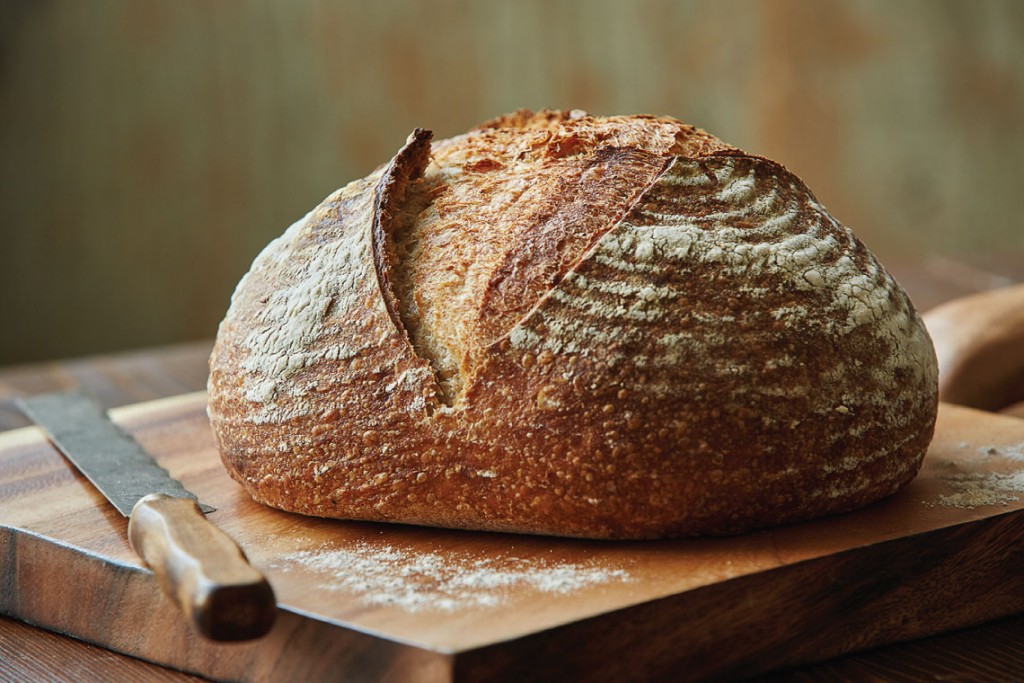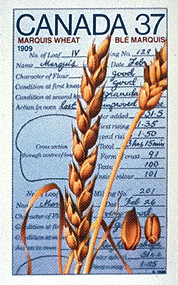Wheat made its planting debut in Canada in 1605. A water-powered grist mill—used for grinding wheat—was established in “Port Royal,” which is now Annapolis Royal, Nova Scotia. In 1617, in Quebec City, a man named Louis Hebert was also an early planter and harvester of Canadian wheat.
Wheat plantations moved west as European settlers made their way across the country. Because of this westward movement, there are records of wheat being planted at Fort St. Louis in Saskatchewan in 1754. Then, in 1812, a larger planting was initiated by those settled in Selkirk, Manitoba.
Wheat seeds were brought with settlers from their home nations to be planted on their new land in Canada. Thus, these types of wheat were not accustomed to Canada’s cold climate—types such as Golden Drop, Red Chaff, Club, White Russia, and Ladoga. Baking products suffered from the use of the resulting poor quality wheat.
A wheat type called Red Fife was introduced to Canada in 1842, which grew better than the other varieties and, therefore, produced better quality products. It was a welcomed change for Canadian settlers, who responded by increasing land dedicated to growing wheat. This new wheat crazy caused an explosion of land development, as well as growth of the established railway systems.
Varieties of Wheat
Dr. William Saunders travelled all over Canada in 1886 to monitor crop adaptability in a variety of areas. He was the director of what was called the “Experimental Farm Services” and was quick to point out that even Red Fife wheat struggled in Canadian climates. In Western Canada, Red Fife’s late maturity made it susceptible to late frosts in autumn.
Dr. Saunders introduced different varieties of wheat from across the world to test which ones could adapt to the often-harsh Canadian climate. He monitored wheat growth in places like Ottawa, ON; Indian Head, SK; Brandon, MB; and Agassiz, BC.
 Red Fife continued to be the primarily grown wheat, as no other variety seemed to fair better. Dr. Saunders decided to try to combine the best qualities of Red Fife (higher seed yield) and another variety called Hard Red Calcutta, from India. Hard Red Calcutta matured 21 days before Red Fife and the stock was about 28cm shorter; however, it didn’t produce as much seed. With the help of his son Percy, Dr. Saunders decided to crossbreed Hard Red Calcutta and Red Fire.
Red Fife continued to be the primarily grown wheat, as no other variety seemed to fair better. Dr. Saunders decided to try to combine the best qualities of Red Fife (higher seed yield) and another variety called Hard Red Calcutta, from India. Hard Red Calcutta matured 21 days before Red Fife and the stock was about 28cm shorter; however, it didn’t produce as much seed. With the help of his son Percy, Dr. Saunders decided to crossbreed Hard Red Calcutta and Red Fire.
Plant breeding was a new science at this time. By crossing Hard Red Calcutta and Red Fire, “Markham A” and “Markham B” were produced. These were later called Marquis A and B. Dr. Saunders collected from these bulks the superior heads of wheat in order to find a line that was stronger than Red Fife.
In order to pick the best heads of wheat, Dr. Saunders would chew kernels and keep the ones that produced a dough ball with high elasticity. Elasticity meant a higher gluten strength—ideal for baking. When mixed with yeast in baking, high-gluten wheat traps more carbon dioxide, which gives the loaf more volume. Low-gluten varieties are better suited for making crackers, cookies, doughnuts, cereals, and so on. He kept the best quality seeds for further planting.
Dr. Saunders’ Marquis wheat stemmed from the best seeds of the Marquis B variety, which proved to be superior according to the doctor’s testing. Marquis wheat matured 7-10 days earlier that Red Fife, was shorter, generated a huge yield of around 41.6 bushels per acre, and produced high quality baking. Not only did Marquis wheat become famous across Canada, it earned Dr. Saunders a $1000 prize for the “best wheat variety in Canada,” as offered by the Canadian Pacific Railway in 1911.
Marquis wheat was soon planted across 80-90% of the total wheat acreage in Canada. It covered more than 20 million acres and reached a total value of 500 million dollars. This high-quality wheat was exported across the world and even aided Canada’s allies in wartime—the UK, France, Belgium, and Greece. This is why Marquis wheat has such a respected legacy in Canada today, where we continue to produce some of the highest value wheat in the world.
True Love

The newest creation and addition to our bread line-up at A Bread Affair is called ‘True Love’ – a one of a kind Marquis loaf bringing back the kind of flavour and texture that has sadly been long forgotten thanks to today’s mass produced bread products. Now that we have learned some of the history behind this heritage wheat – we hope that it will give you a new appreciation and reason to fall in love with true Artisan bread. Every loaf is a part of your heritage, a truly important local BC story that takes you back in time. It’s pure and simple: flour, water, salt.
For a complete list of our Artisan, non-GMO bread, click here.
Availability
The True Love Marquis loaf is available daily at our Granville Island location with limited quantities produced each day on a first-come, first-served basis. The loaves will be available after 2:00PM and just in time for your dinner table. Since the quantity of flour is limited, we will only be able to provide it on a ‘First Come, First Serve’ basis. We will however take prepaid orders on Wednesday by 2:00PM for Saturday. Once this year’s harvest of Marquis Wheat is gone, so will the ‘True Love’ loaf be gone as well.
